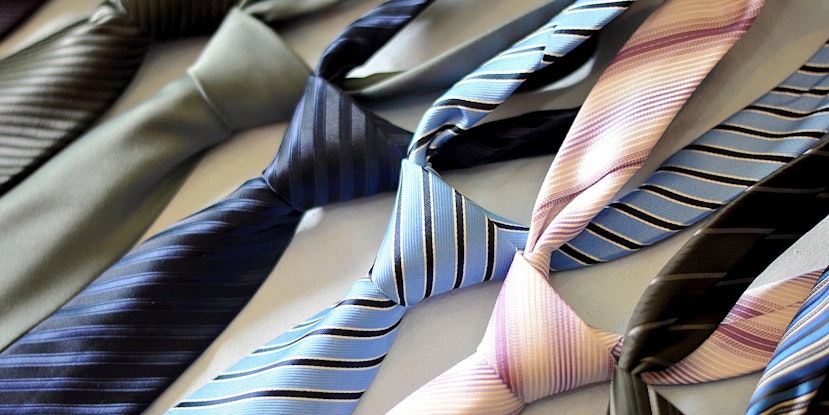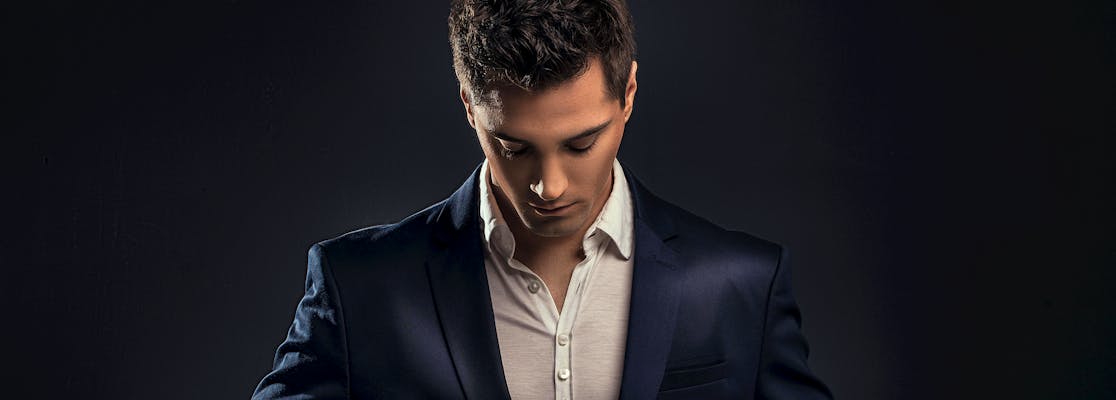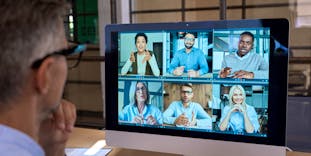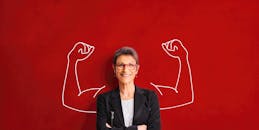Interview Outfits for Men: Tips and Examples for 2024
Updated January 19, 2024
- How to Pick the Best Interview Outfits for Men in April 2024
empty
- Business Casual Interview Attire for Men
- Business Formal Attire Interview Outfits for Men
- Interview Attire for Men: The Accessories
empty
empty
empty
empty
empty
empty
- Job Interview Outfit Tips for Men
- Frequently Asked Questions
- Final Thoughts
When you attend an important job interview it is vital that you make a good impression.
This means drafting an impressive resume being punctual, doing your research and preparing some solid answers to potential interview questions.
First impressions really count in business.
This means that it is vital that your clothes are giving off the right kind of signals, or they could derail all of the other preparations that you have made towards stepping into your future career.
Men may feel that they have fewer outfit options than women when it comes to dressing for work, however, making a great initial impression at an interview may no longer be as simple as grabbing your ‘go-to’ suit from the back of the wardrobe.
Rather, the outfit that you choose for your interview needs to be well thought out; you should consider your interview clothes as if they were a tactical move.
Every item that you decide to wear at your interview gives you the opportunity to let the hiring manager gain an insight into who you are and how you work.
Men, you may not realize it, but when it comes to job hunting in 2024, your clothes really do matter.
How to Pick the Best Interview Outfits for Men in April 2024
Whether you are going for a business casual look or more formal attire, your outfit needs to be neat and clean; no business wants to hire someone that is messy and disorganized.
It is also important that your look matches, including any accessories you wear.
If your outfit clashes, this might give off subtle cues to the recruiter that you are not coordinated or that you might work, or think, in a chaotic way.
Interviews can be nerve-wracking. Although you will need to look smart, it is also important that you remain comfortable so try not to select any clothing that is:
- Too restrictive
- Itchy
- Uncomfortable
- Going to make you too hot or too cold
The best way to choose a look that is going to suit the business you are hoping to become a part of is to do your research in advance.
By dressing in a professional and appropriate way you will give the impression to your potential employer that you care.
In general, the safest interview outfit for a man is a traditional, two-piece business suit with a shirt and tie.
However, in some instances, such as for a creative role or a blue-collar job, you may be able to get away with a more casual look.
Here, we will explore some of the options available for men’s interview outfits, but keep in mind, whether you are going for a formal or more casual look, first impressions count and looking smart and professional is ultimately key.
Dos and Don’ts of Men’s Interview Attire at a Glance: What Not to Wear
Do:
- Dress appropriately for the role and research the company dress code in advance. Check the company website or LinkedIn in advance.
- Select your clothes, shoes and accessories in plenty of time and try them on to assess their suitability
- Arrive looking neat, clean and tidy
- Opt for a conservative/conventional look rather than anything too flamboyant
- Avoid getting into debt over your interview clothes: hire, reuse or borrow
Don’t:
- Wear anything that is dirty, ill-fitting or damaged
- Wear clothes that will make you too hot (consider layering), as getting flushed and sweaty in the interview will not come off well
- Leave your interview outfit choice until the last minute
- Arrive in ripped jeans, sneakers or garish colors, even for a casual role
- Wear slogan tees, band shirts or anything that might be considered controversial (political pin badges, etc)
Business Casual Interview Attire for Men
For some roles, it may be suitable for men to arrive in a more casual, dressed-down style than the traditional two-piece suit that has long been associated with 1980s power dressing.
Men should exercise caution around arriving in casual dress for an interview: only dress in a casual interview outfit if you think this fits the role in question and the company culture of the employer and remember to always err on the side of a more professional look – even if that isn’t a formal suit.
Business casual attire might be acceptable for:
- Startups
- Creative businesses/roles
- Unskilled work (servers, retail workers, etc.)
Men can instantly switch from a formal outfit to a more casual look at their job interview by abandoning the tie or swapping suit pants for corduroy, chinos or khakis.
A few combinations for men's casual interview attire might include:
- Suit pants with t-shirt and blazer
- Dark trousers with a button-down shirt and a sweater
- Black jeans with a button-down shirt and blazer
- A pale blue or grey shirt with neutral-colored chinos
- Trousers with plain-colored polo shirts
There might be some correlation between a more casual dress code being acceptable and jobs that will supply you with a uniform or overalls, such as hotels, fast food retailers, mechanics, chefs, etc.
With this in mind, you should still maintain a presentable and professional appearance at interview.
Business Formal Attire Interview Outfits for Men
A business suit is a classic choice for men to wear at a formal interview and a staple of most men’s wardrobes.
A suit can convey power, status and authority.
Generally, professional attire for an interview will consist of a suit jacket, suit pants, a shirt and a tie.
For a traditional and formal look, you should go for block colors (usually dark ones such as black or navy blue) and avoid contrasting prints or patterns.
Pair with a plain, pale dress shirt that has a collar and buttons. A white shirt is always a good shout.
Ties should be neat and sensible (avoid any novelty prints at the interview stage) although adding a bold-colored tie can add some personality to a plain, formal suit.
Instead of a suit jacket you might also consider:
- A plain V-neck sweater, cardigan or sweater vest worn over your shirt and tie
- A waistcoat (for a very traditional look, this can be worn with a jacket as a three-piece suit)
For an idea of what a tasteful two-piece suit that is suitable for an interview looks like, visit the T.M.Lewin website.
Many businesses across multiple industries will have the expectation that interviewees wear formal clothes for their interview, as well as in the job role itself.
Some examples include:
- The financial sector
- The legal sector
- The corporate sector
Interview Attire for Men: The Accessories
Accessories at an interview should subtly complement your outfit and not be too flashy or distracting.
Jewelry
In general, jewelry should be kept to a minimum.
Facial piercings may need to be removed, especially if they are not part of the dress code at the business in question (you can enquire about this at interview).
Wearing a watch can suggest that you are a keen timekeeper – if you have a smartwatch, ensure that your interview is not going to be disrupted by notifications.
Belt
The general rule for smart dress is that the color of your belt should match your shoes.
Hair and Facial hair
Hair should be clean, combed and styled in an appropriate way (for a formal setting this will be a conservative style; a more informal company may accept hairstyles that are more ‘alternative’).
Traditionally, interview advice for men is to arrive clean-shaven, however, facial hair is becoming increasingly socially acceptable.
Any facial hair should be neat and tidy.
Shoes
Shoes worn by men at a job interview should always be clean, in good condition and a (usually dark) color.
Leather or leather-look dress shoes should be well polished.
Sneakers, Crocs or anything with open toes should be avoided.
Socks
As with the rest of your outfit, your socks should be clean and in good condition with no visible holes or loose threads.
You may be able to get away with colorful socks, even in a formal business environment, but avoid anything with cartoons or very gaudy prints – you may think it comes across as playful, but it could make you appear a little childish.

Tie
As mentioned previously, nothing too loud or flashy.
A bold, colored tie can look striking and add some personality to a plain suit, but your tie should not be distracting or comical.
Job Interview Outfit Tips for Men
Step 1. Work Within Your Budget
Formal outfits can be expensive. If you are struggling financially, you do not have to overstretch your bank balance to make a good impression.
Instead, you could consider:
- Renting a suit – This works out significantly cheaper than buying new and can be returned once your interview is over.
- Borrowing an outfit from a friend – Make sure that they are a similar size and shape to you, so the clothes fit reasonably well
- Finding suitable attire in a secondhand store or at Goodwill – People will often donate good quality items that they no longer need or have outgrown.
- Utilizing suitable clothes that you already own rather than buying new.
Step 2. Don't Rush
It is important that you arrive at your interview clean and well-groomed, so make sure you allow yourself time to:
- Shower/bathe
- Shave
- Brush your teeth
- Brush and style your hair
- Trim and clean your fingernails
- Remove any piercings (if the role requires)
Step 3. Be Prepared
Make sure your clothes are clean and wrinkle-free and that your shoes are free from dirt or scuffs.
You should lay your interview clothes out (and even try them on) in advance of interview day to make sure everything fits and there are no holes, stains or missing buttons.
Generally, a buttoned-down shirt with dark pants, a tie and optional jacket is suitable for most interview settings.
Opt for a jacket and pants that are dark, strong colors (black, navy or blue) and a pale shirt. Leave the novelty ties in the drawer. Shoes need to be smart and well-polished.
Men's casual interview outfits can include trading the suit shirt for a smart polo shirt or casual buttoned-down shirt paired with chinos.
Slacks with a collared shirt under a V-neck pullover and no tie may also do. Even if the business environment means you can get away with casual interview clothing, you still need to look well-kempt, professional and smart, so try not to get carried away.
Interview clothes and shoes should always be neat, clean and suitable for the role in question.
Slogan t-shirts, flip flops, ripped jeans or any kind of athletic wear are always a no when it comes to an interview.
For a more casual or creative role, you might be able to get away with clean, smart jeans for a job interview if paired with a smart shirt or polo shirt.
Ripped or stonewashed jeans are never a good idea. Dress pants, slacks or chinos will almost always be better in an interview scenario than jeans.
Black is a classic color, often associated with strength and leadership. If you want to play it somewhat safe with your interview attire, black is a strong choice. You can also brighten your look up with some subtle accessories if you wish.
The clothes that you wear to interview will make the first impression on the company you are interviewing for and will say something about you before you have even opened your mouth.
You can use your interview clothes as a chance to give a good first impression and show that you have made some effort.
Wear shoes to an interview that match your outfit and are clean, polished and in good condition. Oxfords, brogues or loafers are popular choices with a suit.
You may be able to get away with a polo shirt for an interview if you are going for casual or smart casual dress and this fits with the ethos of the company. In a formal setting, a smart, collared shirt is the best option.
Generally, you should avoid bright, bold colors, such as red and orange, for a job interview.
Wearing a multi-colored outfit is also a bad idea; although you might hope wearing neon colors will convey your colorful and creative personality, the reality is, in an interview situation, it could come across as distracting or overbearing.
You should instead rely on your personality coming through by having strong answers to the hiring manager’s questions.
There is really no such thing as ‘too smart’ for a job interview. Of course, you do not want to look over the top, but if you are sure, the smarter the better.
The best idea is to do some research in advance about the company or ask around for advice so that you get your outfit choice just right.
You should be selecting interview clothes that are smart, functional and well-fitting. You may want to dress appropriately for the company you are interviewing for – doing some prior research using social media or using the company website can help to inform you about their dress code.
Check your state mandate regarding mask-wearing, as well as current CDC advice, immediately prior to your job interview.
As of October 2022, no US states require the general wearing of masks in public places – although some still mandate masking in health care areas (or other high-risk settings).
It is a good idea to have a clean mask with you at all times in case you are required to wear one. It would be polite to enquire, either in advance or once you arrive, if your interviewer would prefer you to wear a mask or not. Masks worn at an interview should be plain and sensible looking.
Final Thoughts
The desire to impress the interviewer is always a big part of selecting clothes for your interview, however, it should not be the sole motivator; wearing a solid interview outfit can also make you feel more confident and empowered.
When you feel confident, this is going to come across in your answers, body language and behavior, which should give you a better chance of success at work.
Take some time out to prepare your interview clothes in advance – this will save you undue stress on the big day.
Always make sure that you arrive at the interview the same way as you would to a day at work – clean, smart, comfortable, confident and ready to make the best impression possible.
Remember to dress for success!




